A Greek Qabalah?
By V.W.Fra Dr Andrew Fear VII°
Tamworth Castle College No. 34
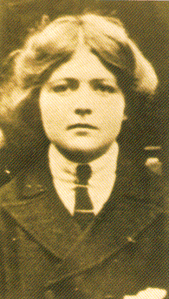
At the beginning of her seminal work, The Mystical Qabalah, Dion Fortune develops the point made by the Roman politician and philosopher Symmachus that there is more than one way to apprehend the Godhead[1] and suggests that the different races of mankind are, in the main, disposed to do this in different manners. She also, rightly, argues that the Qabalah is the core of the western esoteric tradition as we know it today. This leads to an awkwardness given that she posits that the Qabalah is an ancient Jewish tradition: “I do not claim that the modern Qabalistic teachings as I have learnt them are identical with those of the pre-Christian Rabbis, but I claim that they are the legitimate descendants thereof and the natural development therefrom.” and, of course, the Western Esoteric tradition has in the main appealed to non-Jews. The result is that Fortune launches into a long and convoluted apologia to reconcile her two conflicting positions. It is the assertion of this paper that the inclusion of such an apologia is unnecessary as the Qabalah's roots are in fact firmly European and thus its manner of thought perfectly suited to the western mind. It makes this claim of both the fundamental principles of the Qabalah – its theories of divine emanation and of numerology.
To assess the length of any tradition and whence it comes, a few useful principles can be employed. First, we can ask how far back a particular tradition be traced. Second, we can enquire whether are there any similar traditions which can be shown to have a longer pedigree. Third, given that similar ideas can, of course, arise in the heads of men entirely disconnected from one another, we should ascertain whether the two groups concerned were in contact with one another and thence that ideas could be transferred, or new ones created, through intellectual intercourse. When considering these matters, we also need to remember throughout that in Hebrew the word “Kabbalah” simply means “that which is received” and can thus be applied to material which has no hermetic content at all - not all Kabbalah is Qabalah...
Read or download the PDF version here
The Godhead
We must start with the Qabalah's conception of the Godhead. Here we see that its system is a variant of what is normally known as emanationism. The Godhead itself is radically unknowable. However, aspects of the Godhead, normally known Qabalistically as the ten sephiroth, have manifested themselves out of it. These are often, but importantly not always, arranged in balanced pairs in a “tree of life”. The sephiroth are not in a temporal sequence, but a necessary sequence – in the same way that a reflection does not follow its cause in time, but is simultaneous with it. They are also a necessary part of the Godhead. To change analogies – the Godhead can be seen as a fountain – water flows from the fountain at the same time as the fountain exists and indeed if no water flows, the fountain is not a fountain.
Zohar or Book of Splendour
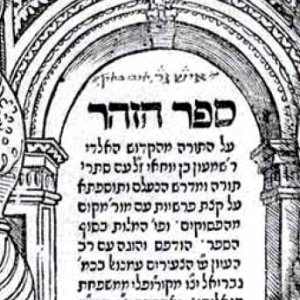
The core text of Qabalistic writing (and we should remember that not all Qabalistic texts express exactly the same viewpoint) is normally regarded as the Zohar or Book of Splendour[2]. This was published by Moses de Leon in Guadalajara (perhaps partially in Avila) in central Spain in the mid-thirteenth century. Moses claimed that he was merely copying a work written by the second century rabbi Shimon bar Yochai. However, there is no good reason to believe this and many reasons not to do so. The attribution of works to more famous predecessors to increase their prestige, readership, and, indeed, monetary value (the end products of this process are known as pseudepigrapha) is a common curse of scholarship. In our field obvious examples are the manifold apocryphal Gospels. Such works are often given away by the style and, indeed, language the text is written in.
The Zohar is no exception. As the Jewish scholar Gershom Scholem has pointed out, there are too many basic grammatical mistakes in its Aramaic for it to have been composed at its ostensible date. Moses tried hard to write in an ancient style, but failed significantly and the questions the Zohar addresses are not those of the 2nd century either, but do fit well with the concerns of the thirteenth[3]. Finally, we know that when Moses’s widow was approached by a wealthy pious Jew from Avila who wished to buy the manuscript from which Moses claimed to have drawn the Zohar she told him that this was impossible because her husband had written the material himself. She added that she had asked him several times, why he had put his teachings into the mouth of another, and he had always answered that doctrines put into the mouth of the miracle-working Simeon ben Yoḥai would be a rich source of profit.
Prior to the Zohar we find the first mention of the sephiroth in the Book Bahir which emerged at the end of the 12th century AD among the Jewish communities settled in Provence[4]. This work is also pseudepigraphical, being attributed to Rabbi Nehunya, who was active around the turn of the 1st-2nd centuries AD. Beyond this our trail runs cold unless we chose to accept the pseudepigraphic attributions of these books and or the completely unproven theory of centuries of “oral transmission” of a hidden tradition.
Philo of Alexandria
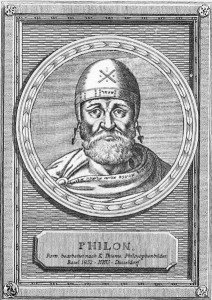
There is however a potential earlier candidate in the Jewish intellectual tradition who engages with the theory of emanation. This is Philo of Alexandria. Philo wrote in the first half of the first century AD and speaks, albeit in an unsystematic way, of the utter unknowability of God and hints at emanations of the Godhead. Philo, in fact, is a key figure for us as his work provides a powerful clue to the origins of this tradition. Growing up in the intellectual powerhouse of the Roman Empire (Alexandria is arguably Alexander the Great’s greatest legacy to the world), this devout individual was worried by what he saw as the primitive nature of his scriptures and adopted the Greek technique of allegory to read them - this had already been developed by Greek intellectuals with regard to the Homeric poems (perhaps the nearest the ancient Greeks came to our notion of scripture).
One of those tools was the notion of emanation which has a demonstrable, not a putative, history in Greek philosophy running back to Plato. In this tradition too the Godhead is radically unknowable - we know that it is, but not what it is. Indeed, even asserting its “being” is problematic as it is in effect all there truly is. As a medieval (neo)Platonist, John Scotus Erigenua put it, “We do not know what God is. God Himself does not know what He is because He is not anything. Literally God is not, because He transcends being.” Hence the Greek term hyperousia (literally “above being”) sometimes used of God The Greek notion of perfection required that a perfect being have no dependence on any other object, be radically simple, that is to say containing no distinct, and thus different, parts within itself, and be unchanging. But it was also posited that such a perfect being sent forth aspects of itself which were easier to apprehend, though each of these, in virtue of being in some ways differentiated, was less real than the unitary Godhead itself. The best analogy is that of concentric ripples in a pond whose force and clarity dissipate the further they extend from the centre[5].
Middle Platonism
Unlike the Jewish qabalistic tradition, we have a firm trail for emanationism in the Greek world. Plato’s work which postulates the never-changing Good, to agathon[6], as the source of all being, was developed by the so-called Middle Platonists of the first and second centuries AD. The most important philosopher of this school was Numenius of Apamea. He posited a Godhead which he named monas, “singularity”, who produced an emanation that he named noesis, thought, which in turn produced the emanation called genesios “creation”. We can see that each step here takes us further away from the singularity of the Godhead - first into the realm of distinct and different thoughts and then into the even more differentiated material world.
Middle Platonism had a marked effect on early Christian intellectuals as can be seen from the systems of the so-called gnostic Christians such as Basilides and Valentinus. These accepted the ineffable nature of the Godhead and posited a series of emanations from it (normally termed aeons) which wered paired with one another. These emanations and the Godhead were termed the “fullness” or pleroma of the universe. It is noteworthy that Valentinus explicitly says that his system is designed to purge Christianity of its dependency on Judaism which is a strong hint that his emanationism is not derived from Jewish thought[7]. Middle Platonism also affected Orthodox Christianity as can be seen from the beginning of the Gospel according to St John (itself a pseudepigraph written around c.AD 100). The “logos” at the beginning of this Gospel is an emanation of the Godhead[8] (Arguably the doctrine can already be found a generation earlier in St Paul’s writings who at one point describes Christ as the image (eikon) of the invisible (aoratou) God and the firstborn (prototokos) of all creation')[9].
NeoPlatonism
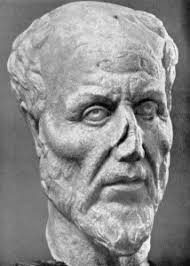
By the third century these ideas had crystalised in the work of the philosopher Plotinus, the first of the “NeoPlatonists”. It is perhaps worth remembering that this tag is a much later invention and would have not been recognised by Plotinus who simply saw himself as a follower of Plato (innovation was regarded with horror in antiquity). His work also incorporates much material from Aristotle – the two philosophers were seen as much more complementary in antiquity than today and indeed one Arabic text derived from Plotinus’s work is entitled “the Theology of Aristotle”[10]. What survives of Plotinus was edited by his disciple Porphryry who complains of his master and friend’s slovenly writing habits[11]. These treatises are known as the Enneads (the “nines” - there are nine “books” of 6 texts each)[12].
The core of Plotinus’s teaching is that the Godhead was radically unknowable and that nothing could be predicated of it: “The One is, in truth, beyond all statement; whatever you say would limit It; the All-Transcendent has no name.”[13] However from this first principle came a sequence of emanations. These are not separate from each other, but each contains part of the original first principle and so looks back towards the previous principle that brought it forth and aspires to rejoin it. They also however look downwards to the emanation which they themselves create, producing a great chain of being. The self-awareness of The One (To Hen) leads to the emanation of Intellect (Nous) where all things were conceived of as potentialities - thus the one became two, this in turn leads to the emanation of Spirit (Psyche) which engenders out of inert matter the ideas conceived by nous.
Collectively To Hen, Nous, and Psyche are the three “hypostases” of the Godhead, “The One”. As can be seen, Plotinus has effectively developed the system already in place by Numenius’s day[14]. These three concepts sound very much like the first three sephiroth, “the supernal triad” of the later Qabalah and, it is suggested here, were their inspiration. It is further suggested that the Plotinian triad forms the basis of the understanding of the Christian Trinity as it has come to be apprehended in Orthodox Christianity. Dean Inge speaks of Soul as the God to whom we pray for our temporal needs, Intellect, He who is of spiritual progress and the life eternal, and The One as the ineffable god of the mystics[15].
For Plotinus the further a thing is along the chain of being the further away it is from true reality and existence. The One is perfection, Intellect contains the plans of God and so is “one-in-many”[16]. Less perfect but still outside time, Soul provides a link to the material world as while it looks back to intellect it also creates the physical world and thus is “one-and-many”[17]. Unlike its two fellow hypostases Soul thus enters into the world of change and time. The far end of this great chain of being is Physical Matter which counter-intuitively to the common man is the least real of all things. Plotinian man is an “amphibian”[18] – he is both matter and intellect. His individual soul is enveloped in the world soul - in the same way as all ideas are enveloped by Intellect – and shares the same capacity to contemplate the higher realms of being, while also being embedded in the physical world. The aim of the philosopher for Plotinus is to eschew the distractions of the unreal physical world and re-ascend through emanations to gain unity with the ultimate Godhead, a process he terms henosis or “oneness”[19].
His last words were “strive to give back the Divine in oneself to the Divine in All.”[20] This was to be done by a process of philosophical contemplation and the avoidance of an excess of physical indulgence but without detriment however to the body's genuine needs, as Plotinus had no time for the excesses of asceticism.
To quote from the Enneads, “Therefore one must “escape” to the upper world, that we may not sink to the level of sense-perception by pursuing the images of sense, or to the level of the growth principle by following the urge for generation and the gluttonous love of good eating, but may rise to the intelligible and nous and God.”[21]
Plotinus famously uses the analogy of a mental body sculting to describe the way an adept can progress. “Go back inside yourself and look: if you do not yet see yourself as beautiful [i.e., as participating in the Idea of Beauty], then do as the sculptor does with a statue he wants to make beautiful - he chisels away one part, and levels off another, makes one spot smooth and another clear, until he shows forth a beautiful face on the statue.
Like him, remove what is superfluous, straighten what is crooked, clean up what is dark and make it bright, and never stop sculpting your own statue, until the godlike splendour of virtue shines forth to you.”[22]
It is every individual’s responsibility to do this. Plotinus suggests that we all have spiritual guardians (daimones) and that our choice of life will determine the sort of guardian who comes to us and indeed will determine whether we progress towards the One or not. As a believer in re-incarnation Plotinus is happy to concede that this process could be long and that through wrong choices we could be reincarnated as an animal or even a plant. “Those, then, who guarded the man in them, become men again. Those who lived by sense along become animals.... But if they did not even live by sense along with their desires but coupled them with dullness of perception, they even turn into plants”[23]. Plotinus is, of course, like other devotees of re-incarnation silent on how animals or plants can succeed in rising once more, though he does believe that all living things have some spark of the ability to indulge in philosophical contemplation in them.
For Plotinus henosis was a rare event in life (he claimed to have achieved it only four times during the time he knew Porphyry[24] ) and he struggled greatly to express his experience. It was brought about after philosophical contemplation, but it was not in fact an intellectual act in itself. “We must close our eyes and invoke a new manner of seeing, a wakefulness that is the birthright of us all, though few put it to use.” The result is “In that vision the seer does not see or distinguish, or even imagine, two; he is changed, no longer himself nor owning himself there, but belongs to God, one with him, center joined with centre.”[25] Of the forms of knowledge he comments “Knowledge has three degrees: opinion, science, illumination. The means or instrument of the first is sense; of the second dialectic (ie philosophical debate); of the third, intuition."[26]
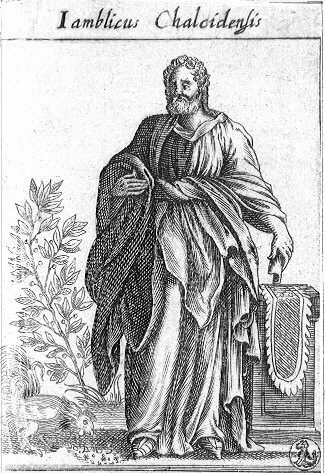
The Plotinian system was further developed by his followers Iambilichus and Proclus. Both of whom (particularly Proclus with his concept of hegemonikoi theoi, or leader gods”, added extra emanations to Plotinus’s system (something with which Plotinus would have been unhappy) and argued that the process of henosis could be aided by ritual (theurgy, literally “God-work”) as well as contemplation[27]. The wilder shores of theurgic practice led to belief in the efficacy of forms of low magic including the animation of statues and perhaps here we can see the roots of the later Jewish legend of the golem. While Plotinus had been quick to disparage those who despised the world[28], his teachings contained such a temptation, particularly the notion that matter was in some way evil in the sense that it was radically non-existent.
His friend and disciple Porphyry begins his biography of Plotinus by saying that his friend seemed ashamed of being in his body. Iambilichus was to stress the goodness of the world which manifested the ideas generated from the One. Taking inspiration from Plato’s Timaeus, Plotinus’s followers also emphasised that there was an underlying mathematical pattern to the process of emanation. Once was this was seen in the ritual of a masonic order, but that ritual has been sadly bowlderised.
The mathematical hypothesis is expounded at length in The Theology of Arithmetic, a pseudepigrapha written by one of Iambilichus's followers[29]. Mathematics by dealing with the abstract rather than any given particular can reveal the patterns of the world more clearly than nature, although they are manifested there too. According to Proclus, “This, therefore, is mathematics: she reminds you of the invisible form of the soul; she gives life to her own discoveries; she awakens the mind and purifies the intellect; she brings light to our intrinsic ideas; she abolishes oblivion and ignorance which are ours by birth.”[30]
This interest in the deeper meaning of numbers is also profoundly Greek. It reaches back at least as far as the mysterious Pythagoras who lived in the 6th century BC about whom sadly we have very little reliable information, though Iambilichus was to write a hagiographic life of him. It is also found in the works of Plato - particularly in the Timaeus. The Greek system of enumeration, like the later Roman one, used letters to substitute for numerical values and this led to the practice of isopsephy - the adding of the values of individual letters in a phrase to produce its number something which dates back at least to the third century BC[31]. Stress on the philosophical importance of the combination of numbers and letters is to be found in the third/fourth century AD philosopher Theodorus of Asine. It is from the Greeks that the ancient Jews borrowed their own system of numbers, ie the use of letters to stand for numerical values.
This is seen for the first time on the coins of the Maccabees. Exposure to Greek numerology led to the Jewish interest in the occult significance of numbers, as one scholar of the field put it “It was only after the Jews came into contact with Greek philosophy that the symbolism of numbers began to play a really important part in the Jewish interpretation of the Bible.[32]” At times the fit is imperfect - the pseudepigrapha Sefer Yezirah’s (dating to the 6th century AD) attempt to assign values of the Hebrew alphabet to the zodiac shows this awkwardness. The Greek alphabet has precisely 7 vowels which fitted the number of known planets perfectly, but Hebrew has no letters representing vowels thus the seven “double” letters had to be assigned to this role. One of these resh is not really a “double letter” at all. That then leaves 15 letters which in turn is 2 short for the five Aristotlean elements. This awkwardness shows first that the ancient Jews were deeply interested in applying this system to their own alphabet, but also that it was they who had borrowed from the Geeks not vice versa.
A NeoPlatonic Qabalah
We can see therefore that the core doctrines expressed in the Qabalah are not, at root, Jewish, but Greek. We can also see that out third condition is fulfilled - these two cultures were in constant contact and thus it is not surprising that ideas passed from one to the other. An earlier instance of such intellectual development in Judaism was the emergence of the notion of Satan who seems to be a variant of the Persian god of evil, Ahriman, whom the Jews encountered during their exile in Babylon. In short the Qabalah is in fact an emanation of NeoPlatonism.
The doctrines of Neo-Platonism were alive and well in the thirteenth century in both Provence and Spain. In the Jewish world we see them in the eleventh century work of Bar Chiyya (Abraham Jaudaeus), a native of Barcelona who may well have moved to Narbonne, his contemporary, the poet Solomon Ibn Gabirol (Avicebron) and the great 12th century polymath Maimonides. In the Christian world the Divine Names of the Pseudo-Dionysius the Areopagite which posits a Neoplatonic celestial hierarchy (ie a Holy Order) had kept the idea of emanation very much alive (there is a ghost of it from an early period in Gregory the Great’s reference to the Nine Choirs of Angels)[33].
These doctrines were transferred to the West in particular by John Scottus Eriugena in the ninth century AD[34] and then developed by the philosophers of the School of Chartres in the 12th century[35].
Nor should we forget the Islamic philosophers Al-Farabi (Alpharabius) and Ibn Sina (Avicenna) - the latter of whom interestingly posited that there were 10 emanations from the Godhead each containing its own supernal triangle[36].
Given the intellectual world in which he lived, it is best to see Moses of Leon not as the conduit of some ancient tradition, but rather as an original philosopher who played a major role in applying the principles of Neo-Platonism to his own faith.
Conclusion
Where does this leave us? First we can see that Dion Fortune, though wrong in her belief that the Qabalah is an ancient doctrine, was right in her assertion that the different races of mankind have their own ways of apprehending the Godhead. The glory of western man is his rationalism on which our civilisation has been founded. Plotinus seeks to give his reader the rational tools with which to apprehend the Godhead. It is because the Qabalah is an emanation of this western tradition that it appeals so strongly to us[37].
Second, it is important to remember that true insights about being and existence neither gain nor lose additional merit from their age. The Qabalah thus loses nothing of its value through being a set of medieval rather than ancient dogmata. Tradition is a living, not a static, thing and thus grows and develop. In particular, the Lurianic Qabalah in its discussion of an evil tree (the Qliphoth) deals with the question of evil in a more effective way than many neoPlatonic authors.
However, it is also worth that seeing a work in its broader context can add to a greater understanding of it. One can gain much from reading Virgil alone, but one will gain more if one has also read Homer. It is to be regretted in this respect that the lecture for the 4th grade of the society pays no attention to these important philosophers. At the very least we should all become familiar with the two great pagan Neo-Platonists of antiquity Plotinus and Proclus, and also St Augustine and the Pseudo-Dionysius, the ancient Christian writers most deeply affected by this philosophy.
To those luminaries we should add the great renaissance synthesisers of neoplatonism and the qabalah, Marsilio Ficino and Pico della Mirandola. Many more too could be listed. One way to begin a neoplatonic journey would be to read Sallustius’s On the Gods and the World. Written by a friend of the Roman Emperor Julian, it is a much cruder work than that of Plotinus but is brief and outlines the main dogmata of the school well[38].
It is often the Qabalah that launches the enquiring mind on this Odyssey, after all there are no (or precious few) books published with titles like NeoPlatonism for Today or NeoPlatonism for Dummies. But as we read and study it, it is worth remembering it is but one stream in an ocean of thought.
Further Reading
References
[1] Symmachus, Rel. 3.10 “Not by one way alone can man attain so great a mystery”.
[2] An easily accessible version in English is D. Chanan Matt, Zohar:The Book of Enlightenment (Paulist Press, 1983)
[3] See the introduction by A Green in the above volume for a detailed discussion of these points.
[4] see J.Dan, The Early Kabbalah (Paulist Press, 1986) pp.28-29.
[5] It is worth noting that this concept of the Godhead is also found in the Advaita Vedanta school of Hinduism where it is styled Nirguna Brahman.
[6] Greek has been transcribed into the Latin alphabet throughout.
[7] See J. Glyndwr Harris, Gnosticism: Beliefs and Practices (Sussex Academic Press, 1999) p.137.
[8] John 1.1. “In the Begining was the Word (logos) and the Word was with God (Theos) and the Word was God”.
[9] Colossians 1.15.
[10] The only recent translation, the author of this paper knows is in Spanish, L. Rubio (tr.), Pseudo-Aristóteles, Teologia (Ediciones Paulinas, 1978).
[11] Porphyry, Life of Plotinus 8.
[12] Plotinus’s Enneads was most easily available in the translation by Stephen McKenna published by Penguin. The edition also contains a translation of Porphyry’s Life of Plotinus.
[13] Enneads 5.1.13.
[14] Indeed he was accused of plagiarising Numenius’s system, see Porphyry, Life of Plotinus 14 & 17.
[15] See W. Inge, The Philosophy of Plotinus (Longman, 1918). This book is available free on the web
[16] Enneads 6.6.13.
[17] Enneads 2.2.3.
[18] Enneads 4.8.4.
[19] Again this process is mirrored in Advaita Vedanta Hinduism.
[20] Porphyry, Life of Plotinus 2.
[21] Enneads 3.4.2.
[22] Enneads 1.6.9.
[23] Enneads 3.4.2.
[24] Porphyry Life of Plotinus 23.
[25] Enneads 6.9.10.
[26] Plotinus, Letter to Flaccus.
[27] This surely is the purpose of masonic ritual work today unless the foolish view that ritual is mere a “play” is adopted. Sadly, Iambilichus’s works are not easy to find. The best starting point is J. M. Dillon, The Platonic Commentaries (Prometheus Trust, 2009). Anothersource is J.S.Kupperman, Living Theurgy: a course in Iambilichus’s Philosophy, Theology, and Theurgy (Avalonia, 2014).
[28] Enneads 2.9
[29] Available in a translation by R. Waterfield, The Theology of Arithmatic (Phanes Press, 1988).
[30] Proclus’s two major works are his Elements of Theology and his Platonic Theology. Both are available from the Prometheus Trust.
[31] For a detailed discussion, see K.Barry, The Greek Qabalah: Alphabetic Mysticism and Numerology in the Ancient World (Weiser Books, 1999).
[32] M. Farbridge, Studies in Biblical and Semitic Symbolism (Keegan Paul, 1923). p.97.
[33] This important work is available in many editions, eg that of CE Rolt which contains an excellent introduction (Aeterna Press, 2015).
[34] See Periphyseon (The Division of Nature), translated by I. P. Sheldon-Williams and JJ O'Meara, (Bellarmin, 1987).
[35] The best known of whom is Bernardus Silvestris who wrote a neoplatonic Cosmographia
[36] See P.Morewedge, “The Logic of Emanationism and Ṣūfism in the Philosophy of Ibn Sīnā (Avicenna),”, Journal of the American Oriental Society 91.4 ( 1971), pp. 467-476.
[37] See B. Hines, Return to the One (Adrasteia Publishing, 2004) xiii-xv.
[38] The best edition is that by AD Nock, Sallustius: Concerning the Gods and the Universe (reprinted Ares press, 1996), but it is available for free on the internet. A good modern introduction to Plotinus is B. Hines, Return to the One (Adrasteia Publishing, 2004)

